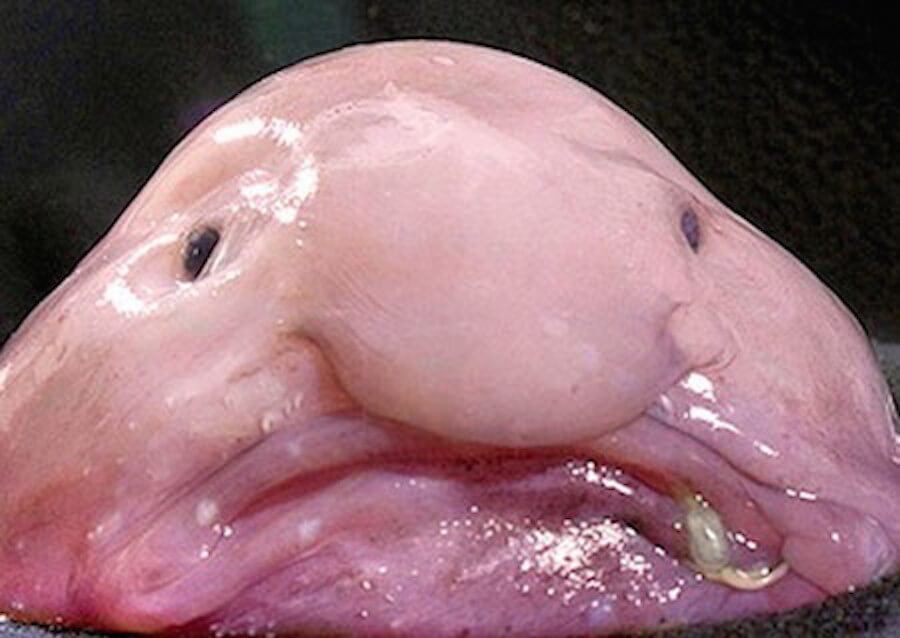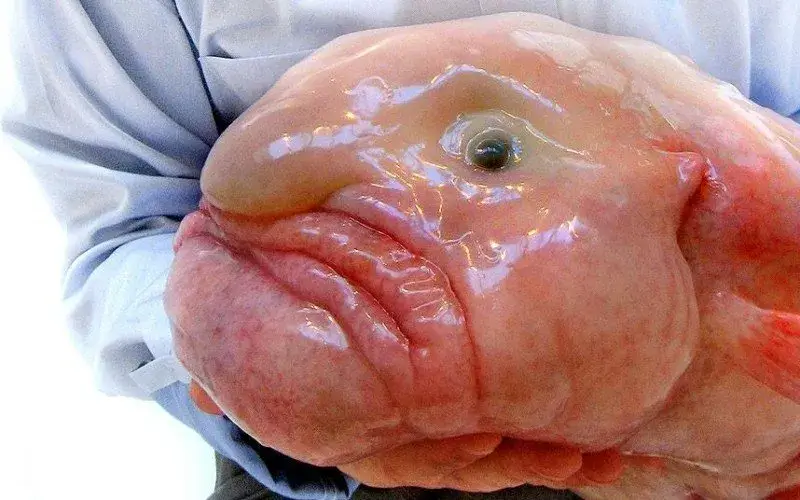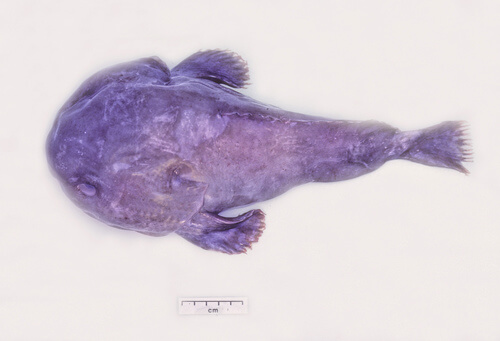The Blobfish: The Ugliest Fish in the World

Discovered in 1983 during an exploration off the coast of New Zealand, the blobfish, or Psychrolutes marcidus, is widely recognized in the world for both its ugliness and its anthropomorphic face.
It went viral on the Internet when a photo of it was revealed in 2003, and this specimen has adapted its body to survive in depths where the pressure is 100 times stronger than atmospheric pressure. Continue reading to discover the most impressive characteristics of the ugliest fish on the planet.
Physical characteristics of the blobfish
With an average length of 30 to 38 centimeters (12 to 15 inches) 2and a weight of 2 kilograms (4.4 lbs), the blobfish is characterized by a skeleton of light bones and little musculature in its body. In addition, like other species that inhabit the seabed, this fish doesn’t have a swim bladder.
This organ, which allows most fish to control their buoyancy while swimming, is absent in this animal for a reason. Living at depths of 900 to 1200 meters (3000 to 4000 feet), the pressures exerted in these environments would cause it to burst.
Instead, the blobfish develops a body with gelatinous flesh and a high fat content. Thanks to this, this specimen can move along the seabed dragged by currents because it’s less dense than water. For this reason, the energy that this animal expends for its mobility is minimal.
On the other hand, although we all have the image in our minds of the blobfish as a deflated mass, the reality is that this isn’t its true appearance. What happens is that when it is brought to the surface, decompression causes its body to expand and distort its features. Likewise, its gelatinous tissue doesn’t support its structure, so it deflates.
Actually, the blobfish has a well-structured head, prominent eyes, and a body similar to that of a tadpole. However, this species was listed as the ugliest animal on the planet in 2013 by a survey involving nearly 100,000 people.

Habitat and feeding
As described above, the blobfish prefers to live at depths between 900 and 1200 meters. Likewise, it tolerates low temperatures very well, as it is found in waters of 2 to 9 degrees Celsius (35 to 48 F). Among other things, this species is endemic to the coasts of Australia and Tasmania, so it can only be seen there.
As for its diet, it mainly consumes small crustaceans, snails, and sea urchins. Being a passive hunter, it catches its prey when they cross its path.
Reproduction of the blobfish
Although there’s little information about their reproduction, it has been observed that females lay around 80,000 eggs per clutch. However, of this number, only 1 or 2% survive. On the other hand, it hasn’t been possible to determine what the courtship and mating process is like due to the difficulty of reaching their natural habitat.
Conservation status
According to the International Union for Conservation of Nature (IUCN), the blobfish is a vulnerable and endangered species. Although it isn’t hunted by commercial fishermen, trawling practices have decimated the population of this animal.
Since it can’t spend much time out of the water, when it’s caught in these nets and thrown back into the sea, most of the time it doesn’t survive. In addition to this, the small territory occupied by the blobfish makes the concern even greater.

Undoubtedly, this fish makes us wonder how many strange animals are still lurking at the bottom of the oceans. Future research will allow us to learn more about the incredible fauna that shares this wonderful planet with us.
All cited sources were thoroughly reviewed by our team to ensure their quality, reliability, currency, and validity. The bibliography of this article was considered reliable and of academic or scientific accuracy.
- Collins G. Blobfish voted world’s ugliest creature. Science News in The Irish Times, Gavin Collins. 2013.
- Nazarkin M, Voskoboinikova O, Balanov A. The Distribution, Morphology, and Taxonomic Position of Psychrolutes pustulosus (Schmidt, 1937) (Scorpaeniformes: Psychrolutidae). Russian Journal of Marine Biology. 2014;40:177-8.
- Jakub L. Who Swims with the Blobfish?: Anthropomorphic Bias in Conservation. TMR [Internet]. 2015 May 1 [cited 2022 Dec. 10];11. Available from: https://journals.library.columbia.edu/index.php/TMR/article/view/5419
